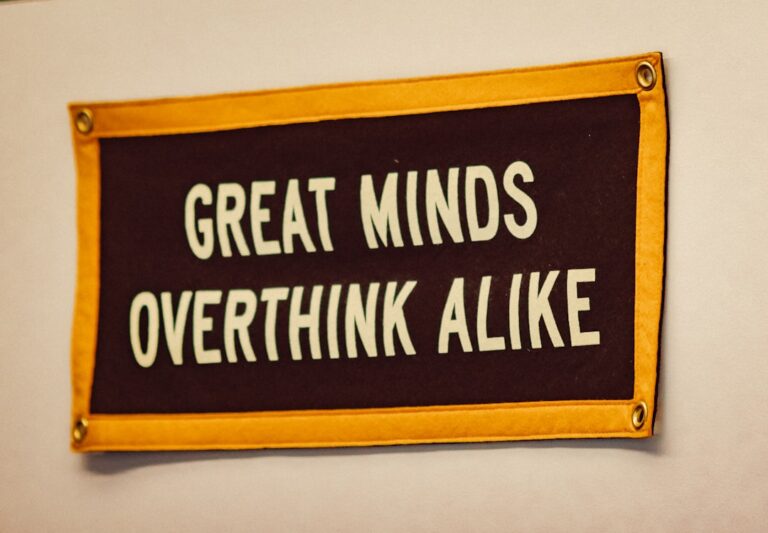
I spent years just drifting. My days were a blur of video games, binge eating, and avoiding responsibility. I felt lost, like a ship without a rudder, tossed around by whatever momentary craving or distraction came my way. Change felt impossible. I knew I wanted a better life, but I had no idea what that looked like or how to get there.
The turning point wasn't a single magical moment. It was the slow, steady process of building a personal compass. It was about creating a personal mission statement. Now, I know that sounds like something you’d find in a corporate handbook, but trust me, this is different. This is about defining your own “why.” It’s a short, powerful declaration of who you want to be and what you want to stand for. It’s the guide that helps you make decisions, big and small, every single day.
Ready to build your own? Let’s walk through it together.
1. Reflect on Your Core Values
First things first. What truly matters to you? I’m not talking about what you think should matter. I mean deep down, what are your non-negotiables? Is it family? Faith? Honesty? Growth? Health?
For years, my values were secretly centered on comfort and instant gratification. That’s why I’d spend hours gaming or turn to junk food. It was the easy path. The shift happened when I consciously decided my new values were discipline, health, and strengthening my relationship with God. My old life didn't align with those values, so it had to change.
Grab a piece of paper and list 5-10 words that represent what you value most. Don't overthink it. Just write.
2. Identify Your Strengths
What are you good at? This isn’t about bragging. It’s about honest self-assessment. Are you a great listener? A creative problem-solver? Are you resilient? Do you have a knack for encouraging people?
Think about what friends and family come to you for. Maybe they need practical advice or just a shoulder to lean on. These are your God-given talents. Recognizing them is a key step in understanding how you can best serve others and find fulfillment.
3. Think About Your Impact
If you weren’t worried about money or what other people thought, how would you want to help others? What kind of positive change would you like to bring to your family, your community, or the world?
Your mission doesn’t have to be about saving the world. It can be about being a present and loving parent. It can be about creating a welcoming home for friends. It can be about bringing integrity to your workplace. Your impact starts with the people right in front of you.
4. Define Your "Perfect Day"
This is a fun one. Imagine your ideal day from the moment you wake up to the moment you go to sleep. What are you doing? Who are you with? How do you feel?
Don’t get caught up in flashy, unrealistic fantasies. Think about a genuinely fulfilling day. For me, a perfect day involves a short, focused block of deep work, time for prayer, a healthy meal with my family, and physical activity that makes me feel strong. It’s simple, but it’s rooted in my values. This exercise helps make your abstract values feel concrete and real.
5. Look to People You Admire
Who inspires you? It could be a historical figure, a saint, a mentor, or a family member. What is it about them that you admire? Is it their courage? Their generosity? Their unwavering faith?
Write down the names of a few people and the specific qualities you respect in them. These are often clues to the person you aspire to become.
6. Consider Your Legacy
This might sound a little heavy, but it's powerful. What do you want people to remember about you? When your time on this earth is done, what do you hope your loved ones will say about the life you lived?
This question cuts through all the noise. It forces you to think beyond daily frustrations and focus on the big picture. Do you want to be remembered as someone who was kind? Hardworking? A faithful servant of God? This helps you see what truly endures.
7. Answer the Big Questions
Now it's time to sit with a few foundational questions. You can do this through quiet reflection, prayer, or journaling.
- Who am I at my core?
- Why am I here?
- What is the most important work I am meant to do?
These aren't easy questions, and the answers might not come all at once. That's okay. The point is to start asking them honestly. For me, answering these questions always leads me back to my faith. My purpose became clearer when I started seeing my life not just as my own, but as a gift from God to be used for His glory.
8. Draft Your First Version
Okay, take a deep breath. It's time to put it all together. Using your notes from the previous steps, try to write a one or two-sentence statement. Don't aim for perfection. Just get a first draft down on paper.
It might be messy. It might be long. That’s fine. Just combine your values, strengths, and desired impact into a single statement.
Here’s an example of a rough first draft: "My mission is to use my discipline and resilience to overcome bad habits, honor God with a healthy body and mind, and be a present and loving husband and father who inspires others to live a better life."
9. Refine and Simplify
Now, polish that draft. Cut out any unnecessary words. Make it strong, clear, and easy to remember. You want a statement that you can recall in a moment of temptation or confusion.
Let's refine that example: "To live with discipline and faith, honoring God in my health, my work, and my love for my family."
See the difference? It’s shorter, more powerful, and gets to the heart of the matter. Your mission statement should feel like it fits you perfectly.
10. Live It and Revisit It
A mission statement on a piece of paper is useless. You have to live it.
Put it somewhere you’ll see it every day. Your desk. Your bathroom mirror. The front of your journal. When you have a choice to make, ask yourself: "Does this align with my mission?"
This is how I finally broke free. When I was tempted to order junk food, I asked if that aligned with honoring God with my health. When I wanted to waste a day gaming, I asked if that aligned with living a life of discipline. The answer was usually no. That mission statement was the tool that helped me make over a million small, better choices that eventually led to losing over 110 pounds and building a life of purpose.
Your mission statement isn’t set in stone. As you grow and enter different seasons of life, you can revisit and tweak it. It’s a living document for a living person.
So, here’s your first small step. What is just one core value that you know belongs in your mission statement? Don’t worry about the whole thing yet. Just start with one word.
What is it?





